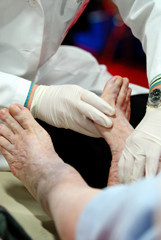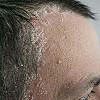Diabetic neuropathy—the agony of da feet
ARCHIVED CONTENT: As a service to our readers, Harvard Health Publishing provides access to our library of archived content. Please note the date each article was posted or last reviewed. No content on this site, regardless of date, should ever be used as a substitute for direct medical advice from your doctor or other qualified clinician.

[Editor’s note: In recognition of American Diabetes Month, Harvard Health Publishing is collaborating with MSN.com on its Stop Diabetes initiative. Today’s post, published on World Diabetes Day, is the first of several focusing on this all-too-common disorder.]
People tend to think of diabetes as a silent, painless condition. Don’t tell that to the millions of folks with diabetes-induced tingling toes or painful feet. This problem, called diabetic neuropathy, can range from merely aggravating to disabling or even life threatening. It’s something I have first-hand (or, more appropriately, first-foot) knowledge about.
High blood sugar, the hallmark of diabetes, injures nerves and blood vessels throughout the body. The first nerves to be affected tend to be the smallest ones furthest from the spinal cord—those that stretch to the toes and feet.
Diabetic neuropathy affects different people in different ways. I feel it as a tingling in my toes. Moving my feet and wiggling my toes helps the tingling disappear for a while. Others have it much worse. Diabetic neuropathy can cause a constant burning feeling in the feet; sharp pain that may be worse at night; and extreme sensitivity to touch, making the weight of a sheet unbearable. It can be sneaky, too, and completely rob the feet of their ability to sense pain.
The truly scary thing about diabetic neuropathy is a 10-letter word we usually associate with horrific accidents or Civil War battlefields—amputation. When sensory nerves in the feet become damaged, a blister, cut, or sore can go unnoticed, allowing time for the wound to become infected.
Infections that cause tissue to die (gangrene) and that spread to the bone may be impossible to treat with cleansing and antibiotics. Diabetes accounts for about 70,000 lower-limb amputations in the United States each year.
Protecting your feet
So far, there isn’t a cure for diabetic neuropathy. To get a handle on ways to help prevent it from appearing and for coping with it when it does, I spoke with Dr. Christopher H. Gibbons, director of the neuropathy clinic at the Joslin Diabetes Center in Boston.
The most important thing you can do is keep your blood sugar as close as possible to your daily and longer-term targets, says Dr. Gibbons. This can stave off the onset of diabetic neuropathy. It also helps keep foot problems in check. Other strategies include:
Control blood pressure. Like high blood sugar, high blood pressure damages blood vessels. This interferes with circulation to the feet, and contributes to nerve damage.
Stop smoking. Smoking interferes with blood circulation, and so compounds the effects of nerve and blood vessel damage.
Stay active. If you can walk or run, do it. If your feet hurt too much, exercise your arms and legs.
Slim down. For people who are overweight, losing weight improves the body’s ability to control blood sugar and it also takes some pressure off the feet.
Several prescription medications are available for treating diabetic neuropathy. "Keep in mind that these drugs only treat pain; they don’t do anything to slow or reverse diabetic neuropathy," cautions Dr. Gibbons. Non-drug options that work for some people include acupuncture, biofeedback, and transcutaneous nerve stimulation.
Check your feet
If you have diabetes, your doctor should examine your feet at least once a year. In addition to looking for obvious problems, he or she will check them for the loss of sensation.
On the other 364 days, you should check your own feet. Look for blisters, cuts, cracked skin, ingrown toenails, or anything else that could give bacteria entry to your body. Clean and fix any problem, and then keep an eye on it. If a wound doesn’t heal, see your doctor right away.
If your joints aren’t as flexible as they used to be, and you have trouble seeing the bottom of your foot, Dr. Gibbons recommends this trick: place a mirror face-up on the floor. Hold your foot over it and voila—you can see the bottom without contorting yourself.
More information on diabetes-related foot problems and good foot care is available from the American Diabetes Association and the Joslin Diabetes Center.
Disclaimer:
As a service to our readers, Harvard Health Publishing provides access to our library of archived content. Please note the date of last review or update on all articles.
No content on this site, regardless of date, should ever be used as a substitute for direct medical advice from your doctor or other qualified clinician.













